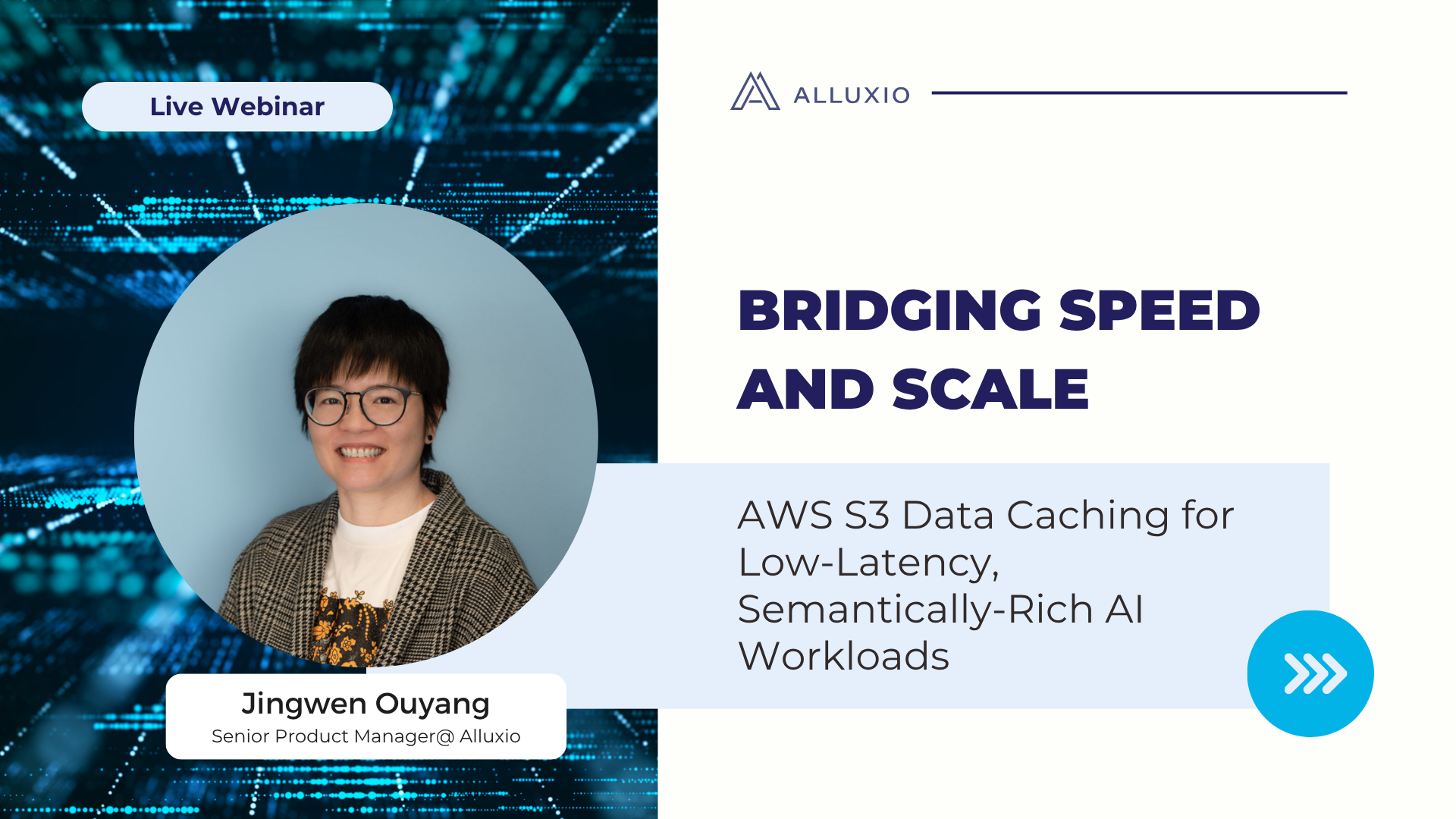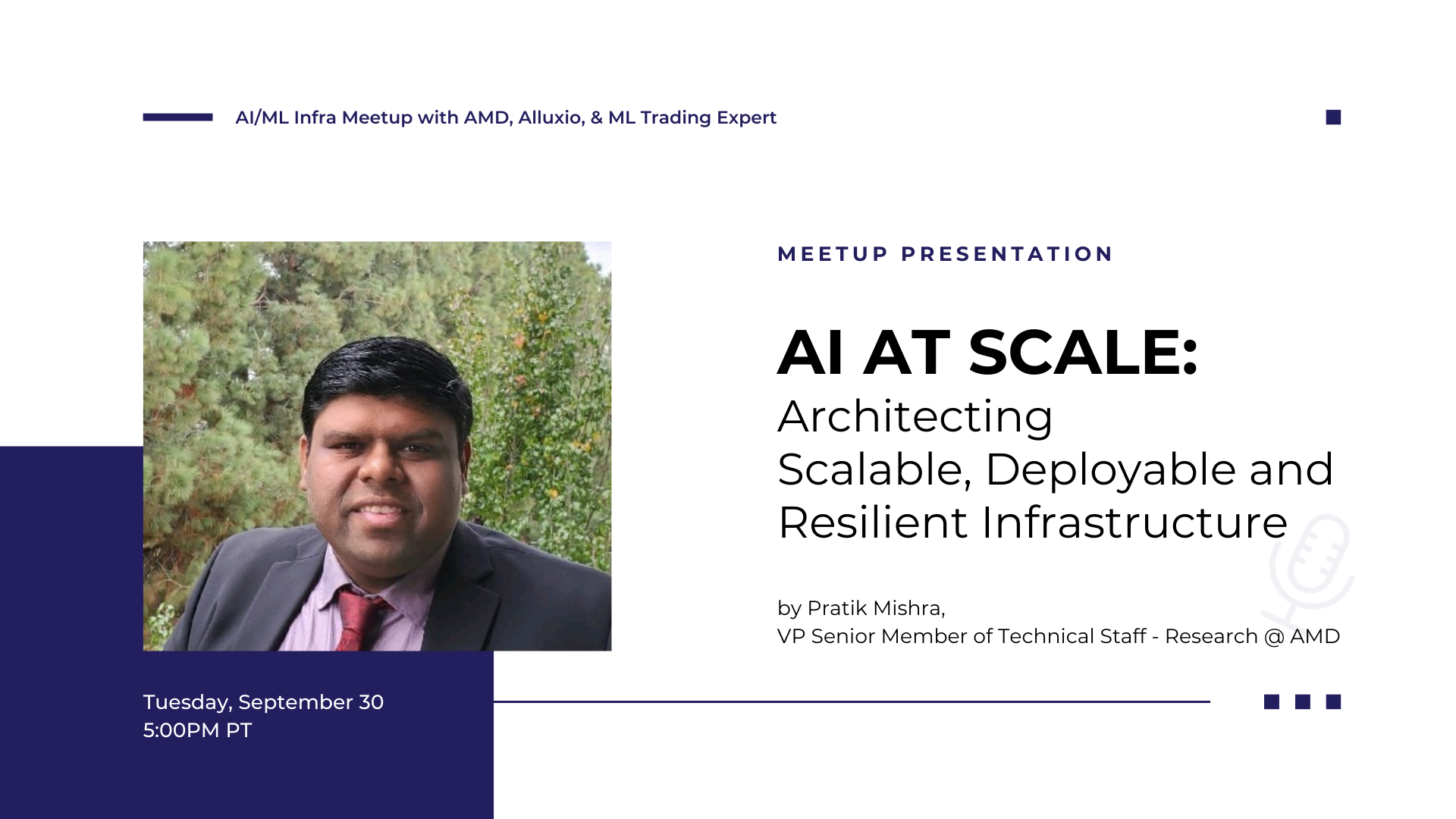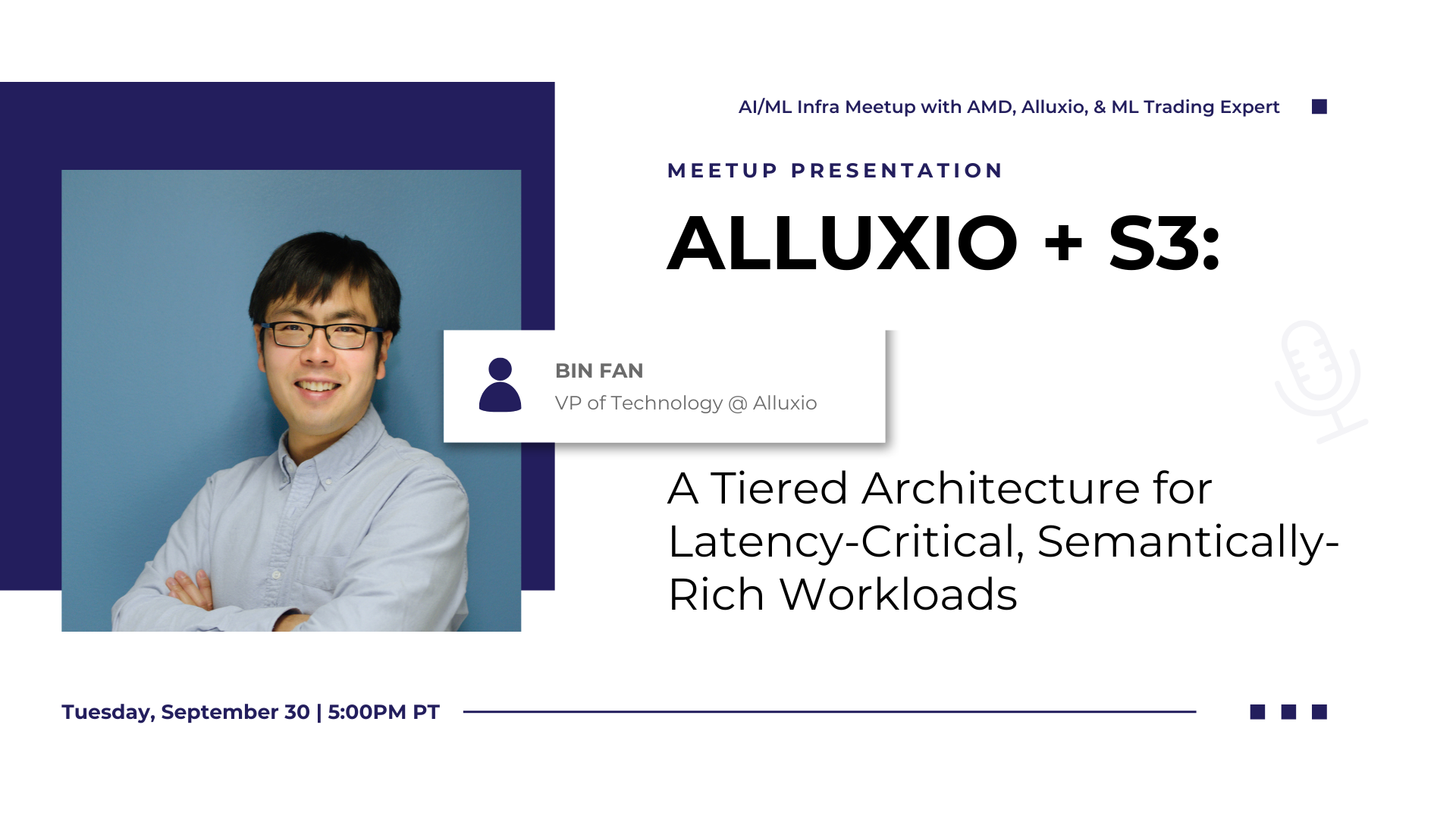Products
Meet You in the Middle: 1000x Performance for Parquet Queries on PB-Scale Data Lakes
June 10, 2025

Storing data as Parquet files on cloud object storage, such as AWS S3, has become prevalent not only for large-scale data lakes but also as lightweight feature stores for training and inference, or as document stores for Retrieval-Augmented Generation (RAG). However, querying petabyte-to-exabyte-scale data lakes directly from S3 remains notoriously slow, with latencies typically ranging from hundreds of milliseconds to several seconds.
In this webinar, David Zhu, Software Engineering Manager at Alluxio, will present the results of a joint collaboration between Alluxio and a leading SaaS and data infrastructure enterprise that explored leveraging Alluxio as a high-performance caching and acceleration layer atop AWS S3 for ultra-fast querying of Parquet files at PB scale.
David will share:
- How Alluxio delivers sub-millisecond Time-to-First-Byte (TTFB) for Parquet queries, comparable to S3 Express One Zone, without requiring specialized hardware, data format changes, or data migration from your existing data lake.
- The architecture that enables Alluxio’s throughput to scale linearly with cluster size, achieving one million queries per second on a modest 50-node deployment, surpassing S3 Express single-account throughput by 50x without latency degradation.
- Specifics on how Alluxio offloads partial Parquet read operations and reduces overhead, enabling direct, ultra-low-latency point queries in hundreds of microseconds and achieving a 1,000x performance gain over traditional S3 querying methods.
Speaker: David Zhu
David Zhu is a Software Engineer Manager at Alluxio. At Alluxio, David focuses on metadata management and end-to-end performance benchmarking and optimizations. Prior to that, David completed his Ph.D. from UC Berkeley, with a focus on distributed data management systems and operating systems for the data center. David also holds a Bachelor of Software Engineering from the University of Waterloo.

Storing data as Parquet files on cloud object storage, such as AWS S3, has become prevalent not only for large-scale data lakes but also as lightweight feature stores for training and inference, or as document stores for Retrieval-Augmented Generation (RAG). However, querying petabyte-to-exabyte-scale data lakes directly from S3 remains notoriously slow, with latencies typically ranging from hundreds of milliseconds to several seconds.
In this webinar, David Zhu, Software Engineering Manager at Alluxio, will present the results of a joint collaboration between Alluxio and a leading SaaS and data infrastructure enterprise that explored leveraging Alluxio as a high-performance caching and acceleration layer atop AWS S3 for ultra-fast querying of Parquet files at PB scale.
David will share:
- How Alluxio delivers sub-millisecond Time-to-First-Byte (TTFB) for Parquet queries, comparable to S3 Express One Zone, without requiring specialized hardware, data format changes, or data migration from your existing data lake.
- The architecture that enables Alluxio’s throughput to scale linearly with cluster size, achieving one million queries per second on a modest 50-node deployment, surpassing S3 Express single-account throughput by 50x without latency degradation.
- Specifics on how Alluxio offloads partial Parquet read operations and reduces overhead, enabling direct, ultra-low-latency point queries in hundreds of microseconds and achieving a 1,000x performance gain over traditional S3 querying methods.
Speaker: David Zhu
David Zhu is a Software Engineer Manager at Alluxio. At Alluxio, David focuses on metadata management and end-to-end performance benchmarking and optimizations. Prior to that, David completed his Ph.D. from UC Berkeley, with a focus on distributed data management systems and operating systems for the data center. David also holds a Bachelor of Software Engineering from the University of Waterloo.
Videos:
Presentation Slides:
Complete the form below to access the full overview:
.png)
Videos
Bridging Speed and Scale: AWS S3 Data Caching for Low-Latency, Semantically-Rich AI Workloads

Amazon S3 and other cloud object stores have become the de facto storage system for organizations large and small. And it’s no wonder why. Cloud object stores deliver unprecedented flexibility with unlimited capacity that scales on demand and ensures data durability out-of-the-box at unbeatable prices.
Yet as workloads shift toward real-time AI, inference, feature stores, and agentic memory systems, S3’s latency and limited semantics begin to show their limits. In this webinar, you’ll learn how to augment — rather than replace — S3 with a tiered architecture that restores sub-millisecond performance, richer semantics, and high throughput — all while preserving S3’s advantages of low-cost capacity, durability, and operational simplicity.
We’ll walk through:
- The key challenges posed by latency-sensitive, semantically rich workloads (e.g. feature stores, RAG pipelines, write-ahead logs)
- Why “just upgrading storage” isn’t sufficient — the bottlenecks in metadata, object access latency, and write semantics
- How Alluxio transparently layers on top of S3 to provide ultra-low latency caching, append semantics, and zero data migration with both FSx-style POSIX access and S3 API access
- Real-world results: achieving sub-ms TTFB, 90%+ GPU utilization in ML training, 80X faster feature store query response times, and dramatic cost savings from reduced S3 operations
- Trade-offs, deployment patterns, and best practices for integrating this tiered approach in your AI/analytics stack
October 28, 2025
AI/ML Infra Meetup | AI at scale Architecting Scalable, Deployable and Resilient Infrastructure

Pratik Mishra delivered insights on architecting scalable, deployable, and resilient AI infrastructure at scale. His discussion on fault tolerance, checkpoint optimization, and the democratization of AI compute through AMD's open ecosystem resonated strongly with the challenges teams face in production ML deployments.
September 30, 2025
AI/ML Infra Meetup | Alluxio + S3 A Tiered Architecture for Latency-Critical, Semantically-Rich Workloads

In this talk, Bin Fan, VP of Technology at Alluxio, presents on building tiered architectures that bring sub-millisecond latency to S3-based workloads. The comparison showing Alluxio's 45x performance improvement over S3 Standard and 5x over S3 Express One Zone demonstrated the critical role the performance & caching layer plays in modern AI infrastructure.
September 30, 2025
